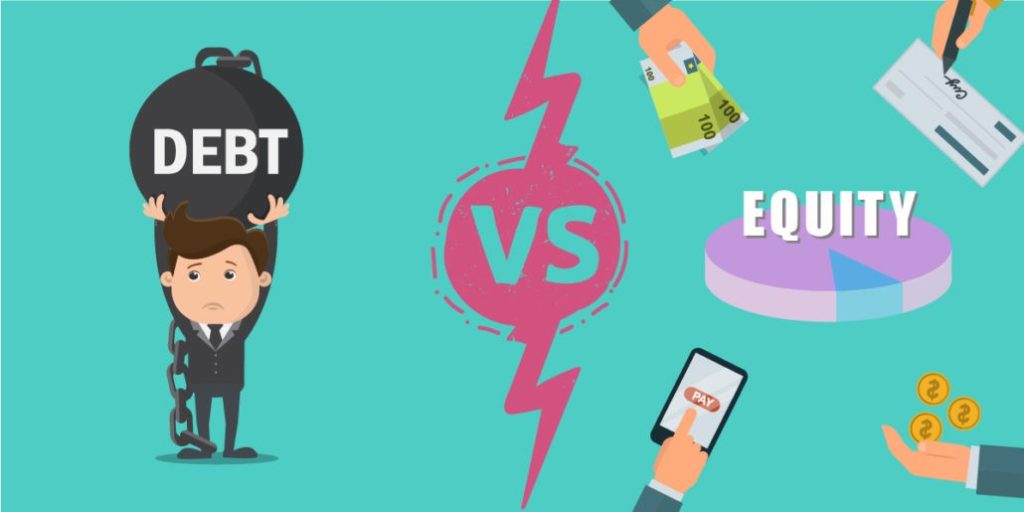When businesses need capital to grow, expand, or navigate challenges, they often face a critical decision: equity vs. debt financing. Both options offer distinct advantages and disadvantages. The choice between them can significantly impact a company’s financial health and future prospects. Understanding the differences between equity vs. debt financing is essential when making decisions that align with your goals. Let’s review the key aspects of each financing method. We’ll also provide insights into how businesses can choose the most suitable option.
Understanding Equity Financing
Equity financing involves raising capital by selling shares of ownership in a company. Investors who purchase these shares become partial owners, with a stake in the company’s future profits and losses. Unlike debt financing, equity financing does not require repayment of principal or interest. Instead, investors receive returns through dividends and capital appreciation if the company performs well.
Moreover, equity financing can come from various sources, including venture capitalists, angel investors, and private equity firms. Startups and high-growth companies often rely on equity financing to secure the necessary capital for scaling operations. It’s also useful for developing products and entering new markets. By selling equity, businesses gain access to significant funds without the burden of debt repayment. This allows them to focus on growth and innovation.
However, equity financing also comes with potential downsides. By selling shares, business owners dilute their ownership and control over the company. Investors typically seek a say in strategic decisions. This may lead to conflicts if their interests do not align with those of the original owners. Additionally, the process of securing equity financing can be time-consuming and complex, often requiring extensive due diligence and negotiations.
Understanding Debt Financing
Debt financing, on the other hand, involves borrowing money that must be repaid over time, usually with interest. Common sources of debt financing include bank loans, bonds, and lines of credit. Unlike equity financing, debt financing does not involve giving up ownership or control of the company. Once the debt is repaid, the relationship with the lender ends, and the business retains full control of its operations.
Moreover, debt financing offers tax advantages, as interest payments on loans are often tax-deductible. This feature can reduce the overall cost of borrowing. It can also make debt financing an attractive option for businesses with steady cash flow and predictable revenues. Additionally, the fixed repayment schedule associated with debt financing allows businesses to plan their finances more effectively. It let’s them know exactly when and how much they need to repay.
However, debt financing also carries risks. The obligation to make regular interest and principal payments can strain a company’s cash flow. This makes it especially difficult during periods of low revenue or economic downturns. Failure to meet debt obligations can lead to default, damaging the company’s credit rating and potentially leading to bankruptcy. Furthermore, excessive debt can limit a company’s ability to secure additional financing in the future. As a result, lenders may view the business as a higher risk.
Equity vs. Debt Financing: Key Considerations
When deciding between equity vs. debt financing, businesses must carefully consider their specific circumstances and goals. One of the primary factors to consider is the company’s current financial position. Businesses with strong cash flow and profitability may prefer debt financing, as they can comfortably manage interest payments and avoid diluting ownership. In contrast, startups and companies in growth stages may lean toward equity financing to access larger amounts of capital without the immediate burden of repayment.
Additionally, the cost of capital is a crucial consideration in the equity vs. debt financing decision. While debt financing typically involves lower upfront costs, the interest payments can add up over time, increasing the total cost of borrowing. Equity financing, on the other hand, may involve higher upfront costs in terms of legal fees and investor relations, but it does not carry the ongoing financial obligations associated with debt.
Furthermore, the impact on control and decision-making is another critical factor. Business owners who prioritize maintaining control over their company may prefer debt financing, as it allows them to retain full ownership and authority. However, those who are willing to share control in exchange for capital and expertise may opt for equity financing, especially if the investors bring valuable industry experience and connections.
The stage of the business also plays a significant role in the equity vs. debt financing decision. Early-stage companies with limited operating history may struggle to secure debt financing due to the perceived risk. In such cases, equity financing may be the more viable option, as investors are often more willing to take on higher risks in exchange for potential high returns. On the other hand, established businesses with a solid track record may find debt financing more accessible and cost-effective.
Combining Equity and Debt Financing
In some cases, businesses may find that a combination of equity and debt financing is the best approach. By using a mix of both financing methods, companies can balance the benefits and drawbacks of each, optimizing their capital structure for growth and stability. For example, a business may use equity financing to fund long-term strategic initiatives, such as expanding into new markets or developing innovative products, while relying on debt financing to cover short-term operational needs.
Moreover, combining equity and debt financing can enhance a company’s financial flexibility, allowing it to respond more effectively to changing market conditions and opportunities. By diversifying their sources of capital, businesses can reduce their reliance on any single financing method and mitigate the risks associated with each.
The decision between equity vs. debt financing is one of the most important choices business owners face when seeking to raise capital. Each option has its own advantages and challenges, and the right choice depends on the company’s financial position, growth objectives, and risk tolerance. By carefully evaluating their needs and considering the long-term implications of each financing method, businesses can make informed decisions that support their growth and success. Whether opting for equity, debt, or a combination of both, the key is to align the financing strategy with the overall vision and goals of the company.


